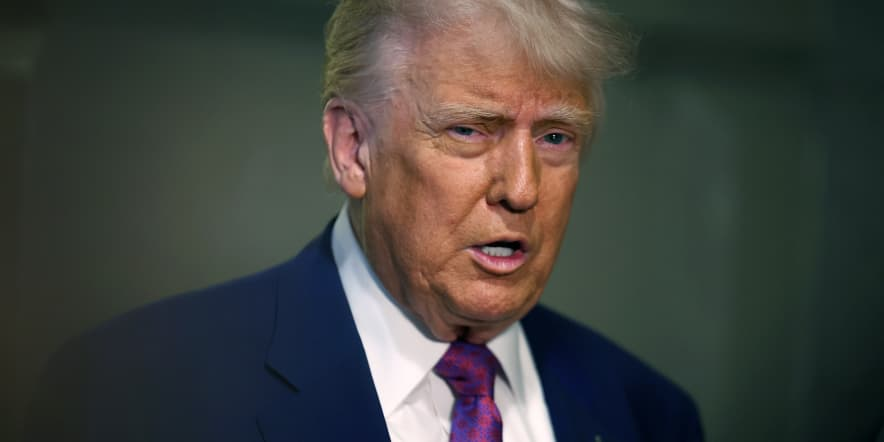In May 2025, President Donald Trump’s ambitious tax and spending legislation, dubbed the “One Big, Beautiful Bill Act,” has taken center stage in Washington, D.C., sparking heated debates among lawmakers, economists, and the public. The 1,116-page bill, which aims to reshape America’s tax code and fulfill key campaign promises, cleared a major hurdle in the House of Representatives on May 21, 2025, and is now headed for a floor vote. Promising tax cuts for millions, the bill also raises concerns about the national debt, social program cuts, and who will truly benefit. Here’s a closer look at what’s in the bill, the controversies surrounding it, and what it could mean for Americans.

What’s in Trump’s Tax Bill?
The “One Big, Beautiful Bill Act” is a massive legislative package that combines tax reforms, spending priorities, and immigration policies. Its core focus is extending the 2017 tax cuts from Trump’s first term, which were set to expire, while introducing new tax breaks designed to appeal to a broad range of voters. Key provisions include:
- Permanent 2017 Tax Cuts: The bill makes permanent the individual and corporate tax reductions from Trump’s first term, which lowered rates for many households and businesses. These cuts are estimated to cost $3-5 trillion over the next decade, according to nonpartisan analysts.
- No Tax on Tips: A popular campaign promise, the bill eliminates federal income taxes on tips for workers earning less than $160,000 annually, with a deduction cap of $25,000 per year. This applies to restaurant staff, gig economy workers, and others who rely on tips.
- No Tax on Overtime: Overtime wages would be exempt from federal income taxes, a move aimed at supporting blue-collar workers. However, the Tax Foundation estimates this could reduce federal revenue by $680-866 billion from 2025 to 2034.
- Car Loan Interest Deduction: The bill allows a temporary deduction of up to $10,000 for interest on car loans for American-made vehicles, encouraging domestic manufacturing.
- Social Security and Seniors: Instead of eliminating taxes on Social Security benefits, the bill offers a temporary “senior bonus” through an expanded standard deduction for seniors, set to expire in 2029.
- Child Tax Credit and Standard Deduction: The child tax credit would increase from $2,000 to $2,500, and the standard deduction for single filers would rise from $15,000 to $16,000, both expiring in 2029.
- SALT Deduction Debate: The bill proposes raising the cap on state and local tax (SALT) deductions from $10,000 to $30,000, but some Republicans from high-tax states like New York and California push for a higher cap, potentially costing $1 trillion over a decade.
The bill also includes funding for border security, mass deportations, and increased defense spending, alongside cuts to programs like Medicaid and green energy tax credits.

The Push for Passage
On May 21, 2025, the House Rules Committee advanced the bill after 21 hours of debate, setting the stage for a floor vote. Trump personally visited Capitol Hill on May 20, urging House Republicans to unite behind the legislation. “I think we have unbelievable unity,” Trump said, calling it a “great victory” for his agenda. However, the path to passage has been rocky.
House Speaker Mike Johnson faces a delicate balancing act with a narrow Republican majority. Hardline conservatives, like Rep. Chip Roy and the House Freedom Caucus, initially blocked the bill, demanding deeper spending cuts to offset the tax breaks. Meanwhile, moderate Republicans from blue states, part of the “SALT Caucus,” argue the proposed SALT deduction increase isn’t enough for their constituents. Trump reportedly told lawmakers, “Don’t f— around with Medicaid,” warning against drastic cuts that could alienate voters ahead of the 2026 midterms.
Despite these challenges, a rare Sunday night vote on May 18 allowed the bill to move forward when four hardline Republicans voted “present,” securing a 17-16 approval in the House Budget Committee. The White House, through press secretary Karoline Leavitt, urged Congress to act swiftly, stating, “This is what voters sent Republicans to Washington to accomplish.”
Who Benefits, Who Loses?
The bill has sparked intense debate over its winners and losers. Supporters argue it delivers on Trump’s promises to boost the economy and support workers. Tipped workers, seniors, and those earning overtime could see immediate tax relief, while businesses benefit from permanent corporate tax cuts. Uber CEO Dara Khosrowshahi praised the inclusion of gig economy workers in the no-tax-on-tips provision.
However, critics, including Democrats and some economists, warn the bill disproportionately favors the wealthy. Rep. Jim McGovern, a Democrat, criticized it for “kicking millions off healthcare and food benefits to finance tax cuts for billionaires.” The Congressional Budget Office (CBO) estimates the bill could add $3.8 trillion to the federal deficit by 2034, exacerbating the nation’s $36.2 trillion debt. Moody’s recent downgrade of the U.S. credit rating has heightened concerns, with 30-year Treasury yields reaching 5.095%—the highest since October 2023.
Temporary provisions, like the senior bonus and child tax credit increase, have been called “giveaways” by analysts like Adam Michel of the Cato Institute, expiring just before Trump leaves office in 2029. Cuts to Medicaid and SNAP (food assistance) could also harm low-income families, while proposed tariffs—described as taxes by critics—may raise consumer prices.

Economic and Political Implications
The bill’s economic impact is a major point of contention. Supporters claim it will stimulate growth, but nonpartisan analysts warn of long-term fiscal risks. Michael Peterson of the Peter Peterson Foundation told CNN, “The country is on track to add $22 trillion more to the debt over the next decade, and this bill would accelerate that.” Bond investors are also wary, with rising Treasury yields signaling concerns about increased borrowing.
Politically, the bill tests Republican unity. Hardline fiscal hawks, like Rep. Andy Harris, push for spending cuts, while moderates like Rep. Mike Lawler resist changes that could hurt their re-election chances. Democrats, unified in opposition, argue the bill prioritizes the wealthy over the vulnerable. The Senate’s stance remains uncertain, though the unanimous passage of the No Tax on Tips Act on May 20 suggests some bipartisan support for specific provisions.
Public Sentiment and What’s Next
Public reaction, as seen on platforms like X, is mixed. Some users praise the tax cuts as a win for workers, while others decry the potential deficit increase and social program cuts. The bill’s passage in the House is expected soon, but its fate in the Senate and the broader economic fallout remain unclear. If passed, it could reshape taxes for millions, but at the cost of a growing national debt and potential cuts to critical services.
As Washington braces for the final vote, Americans are left wondering: Will Trump’s “big, beautiful bill” deliver prosperity or deepen economic divides? The answer may shape the nation’s financial future for years to come.
Also Read :- Ole Miss Baseball Shines in 2025: A Season of Triumphs and Challenges






